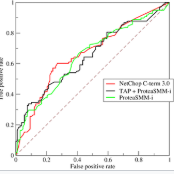It has been shown in the literature that marijuana use is associated with changes in brain network connectivity. We propose large-scale Extended Granger Causality (lsXGC) and investigate whether it can capture such changes using resting-state fMRI. This method combines dimension reduction with source time-series augmentation and uses predictive time-series modeling for estimating directed causal relationships among fMRI time-series. It is a multivariate approach, since it is capable of identifying the interdependence of time-series in the presence of all other time-series of the underlying dynamic system. Here, we investigate whether this model can serve as a biomarker for classifying marijuana users from typical controls using 126 adult subjects with a childhood diagnosis of ADHD from the Addiction Connectome Preprocessed Initiative (ACPI) database. We use brain connections estimated by lsXGC as features for classification. After feature extraction, we perform feature selection by Kendall's-tau rank correlation coefficient followed by classification using a support vector machine. As a reference method, we compare our results with cross-correlation, which is typically used in the literature as a standard measure of functional connectivity. Within a cross-validation scheme of 100 different training/test (90%/10%) data splits, we obtain a mean accuracy range of [0.714, 0.985] and a mean Area Under the receiver operating characteristic Curve (AUC) range of [0.779, 0.999] across all tested numbers of features for lsXGC, which is significantly better than results obtained with cross-correlation, namely mean accuracy of [0.728, 0.912] and mean AUC of [0.825, 0.969]. Our results suggest the applicability of lsXGC as a potential biomarker for marijuana use.
翻译:文献显示,大麻的使用与大脑网络连通性的变化相关。 我们提出大规模扩大Granger Causality( lsXGC), 并调查它是否可以使用休息状态 FMRI 来捕捉这些变化。 这种方法将减少尺寸与源时间序列扩增结合起来, 并使用预测时间序列模型来估计FMRI时间序列之间的直接因果关系。 这是一种多变量方法, 因为它能够识别时间序列在基础动态系统所有其他时间序列中存在的相互依存性。 我们在这里调查这个模型是否可以作为生物标志, 用126个成人科目来将大麻用户从典型的控制措施中分类, 使用ADHD的童年诊断, 使用SCDC 连接时间序列增强, 使用预测时间序列模型来估计FMMRI 的时间序列。 功能提取后, 我们使用 Kendalls- talder 级相关系数, 并随后使用支持矢量机进行分类。 作为参考方法, 我们比较我们的结果与交叉关系, 通常在文献中使用它, 126个成人科目, 连接度分析ALY- 808 和正值 方向 方向 方向, 方向 数据序列, 的数值范围,, 表示为平均方向 水平 水平,, 一种不同 水平, 水平 水平 水平, 水平,, 以 水平 水平 水平,,, 水平,, 水平 水平,,,,,, 以 以 方向 方向 方向 方向 方向 方向 方向, 方向 方向 方向 方向 方向 方向 方向,,,,,,,,,,,,,,,,,,,,,,, 方向,,,,,,,, 方向 方向 方向 方向 方向 方向 方向, 方向, 方向 方向 方向,,,,, 方向,,,,,,,,,,,, 方向, 方向,, 方向, 方向,




